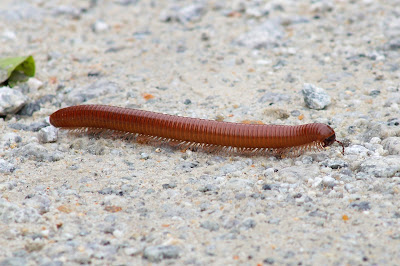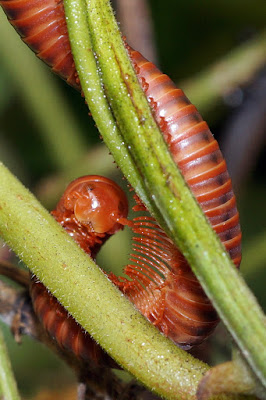Millipede
Millipede (class Diplopoda), as its name suggests, is related to centipede but it differs to the latter in many ways. For instance, millipede has two legs per segment instead of only one in centipede. It also has different dietary preference because it feeds mainly on decaying vegetation, as such they are quite common in the rainforest floor. It is equipped with a pair of mandible well suited for its detritivorous life habit.
 |
| Millipede has two legs per segment. |
Compared to the compound eyes of insects, the eyes of millipede are much simpler. These simple eye, also known as ocelli, are clustered on top of its head. In addition millipede has a pair of antenna to find its way in the dark forest floor.
 |
| Millipede has simple eyes and a pair of mandible. |
Because millipede lacks any poison gland and fangs, it relies on passive defensive behavior to protect itself. When it feels threatened, it coils up into a ball, exposing only its hard exoskeleton and hiding much of its softer lower parts. It can also secretes a foul smelling fluid which further deters its potential predator.